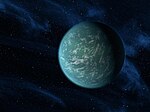2011 EO40
| Discovery[1] | |
|---|---|
| Discovered by | Richard A. Kowalski (Mount Lemmon Survey) |
| Discovery date | 10 March 2011 |
| Designations | |
| 2011 EO40 | |
| Orbital characteristics[3][5] | |
| Epoch 9 August 2022 (JD 2459800.5) | |
| Uncertainty parameter 6 | |
| Aphelion | 2.5467 AU (380.98 Gm) |
| Perihelion | 0.76039 AU (113.753 Gm) |
| 1.65356 AU (247.369 Gm) | |
| Eccentricity | 0.54015 |
| 2.1264 yr (776.66 d) | |
| 169.9° | |
| 0° 27m 47.736s / day | |
| Inclination | 3.3591° |
| 50.249° | |
| 17.154° | |
| Earth MOID | 0.0482051 AU (7.21138 Gm) |
| Jupiter MOID | 2.79322 AU (417.860 Gm) |
| Physical characteristics | |
| Dimensions | 150–330 m[a][6] |
| 21.5[3] | |
2011 EO40 is an asteroid, classified as a near-Earth object and a potentially hazardous asteroid of the Apollo group. It is a possible candidate for the parent body of the Chelyabinsk superbolide.[7][8][9]
Discovery, orbit and physical properties
[edit]2011 EO40 was discovered by Richard A. Kowalski on 10 March 2011 while observing for the Mount Lemmon Survey.[1][10]
Its orbit is typical of Apollo asteroids and is characterized by significant eccentricity (0.54), low inclination (3.36º), and a semi-major axis of 1.65 AU.[10] Upon discovery, it was classified as an Earth crosser, a near-Earth asteroid (NEA) and a potentially hazardous asteroid (PHA) by the Minor Planet Center. It was listed on the Sentry Risk Table for less than one day.[11] Its orbit is in need of additional observations to determine if it is part of an asteroid family; as of October 2015 the orbit is determined using just twenty observations spanning an observation arc of 34 days.[3] 2011 EO40 has an absolute magnitude of 21.5,[3] which gives a characteristic diameter of about 200 metres (660 ft).[6]
Relationship to the Chelyabinsk superbolide
[edit]Recent calculations indicate that this object is a plausible candidate to be the parent body of the Chelyabinsk superbolide, since its orbit is very similar to the computed, pre-impact path of the Chelyabinsk meteoroid.[7][8][9] It has relatively frequent close encounters with Venus, the Earth–Moon system, and Mars. It had a close encounter with Earth on 28 January 2011 at 0.0953 AU (14,260,000 km; 8,860,000 mi),[3] and it will have a nominal Earth approach on 23 September 2025 at about 0.06 AU (9,000,000 km; 5,600,000 mi).[3] Asteroid 2011 EO40 experiences close approaches to the Earth–Moon system following a rather regular pattern, every 17 years approximately due to the combined action of multiple secular resonances.[8]
Visibility
[edit]Future opposition windows are: 7 June 2016 at magnitude 24.5, and 28 May 2018 at magnitude 24.6. The best observation window will be on 2–23 September 2025.[3] Depending on the Earth approach distance (0.04–0.12 AU),[3] it should be brighter than magnitude 19.[12]
See also
[edit]Notes
[edit]- ^ This is assuming an albedo of 0.20–0.04.
References
[edit]- ^ a b Discovery MPEC
- ^ List Of Apollo Minor Planets
- ^ a b c d e f g h i "JPL Small-Body Database Browser: (2011 EO40)". Jet Propulsion Laboratory. Retrieved 2 August 2022.
- ^ "List Of The Potentially Hazardous Asteroids (PHAs)". Minorplanetcenter.net. Retrieved 27 June 2014.
- ^ NEODyS-2 on 2011 EO40 Retrieved 2013-07-31
- ^ a b Absolute-magnitude conversion table (H)
- ^ a b de la Fuente Marcos, Carlos; de la Fuente Marcos, Raúl (21 November 2013). "The Chelyabinsk superbolide: a fragment of asteroid 2011 EO40?". Monthly Notices of the Royal Astronomical Society: Letters. 436 (1): L15 – L19. arXiv:1307.7918. Bibcode:2013MNRAS.436L..15D. doi:10.1093/mnrasl/slt103.
- ^ a b c de la Fuente Marcos, Carlos; de la Fuente Marcos, Raúl (1 September 2014). "Reconstructing the Chelyabinsk event: pre-impact orbital evolution". Monthly Notices of the Royal Astronomical Society: Letters. 443 (1): L39 – L43. arXiv:1405.7202. Bibcode:2014MNRAS.443L..39D. doi:10.1093/mnrasl/slu078.
- ^ a b de la Fuente Marcos, Carlos; de la Fuente Marcos, Raúl; Aarseth, S. J. (10 October 2015). "Chasing the Chelyabinsk asteroid N-body style". The Astrophysical Journal. 812 (1): 26 (22 pp). arXiv:1508.05907. Bibcode:2015ApJ...812...26D. doi:10.1088/0004-637X/812/1/26.
- ^ a b MPC data on 2011 EO40
- ^ "Observations of small Solar-System bodies". hohmanntransfer. 11 March 2011. Archived from the original on 23 November 2020. Retrieved 6 August 2013. (2.7e-07 = 1 in 3,704,000 chance)
- ^ "2011EO40 Ephemerides for 23 August 2025 through 30 September 2025". NEODyS (Near Earth Objects – Dynamic Site). Retrieved 4 July 2014.
External links
[edit]- 2011 EO40 data at MPC
- MPEC 2011-E59 : 2011 EO40 (Discovery MPEC)
- Russian meteor may have gangmates in tow, Nature, short article
- Has the Chelyabinsk Meteor Parent Asteroid Been Found?, Bad Astronomy blog entry
- 2011 EO40 at NeoDyS-2, Near Earth Objects—Dynamic Site
- 2011 EO40 at ESA–space situational awareness
- 2011 EO40 at the JPL Small-Body Database



